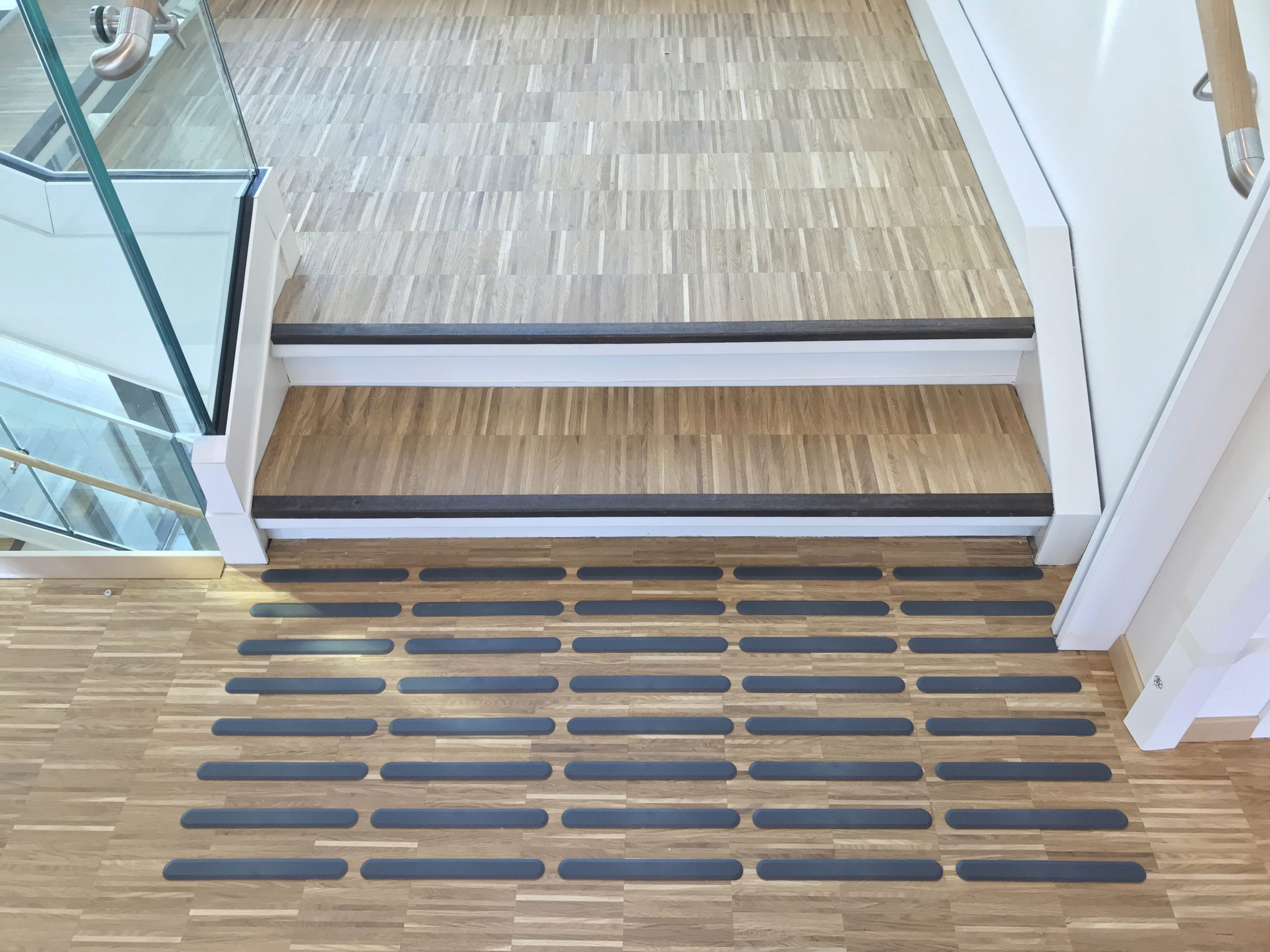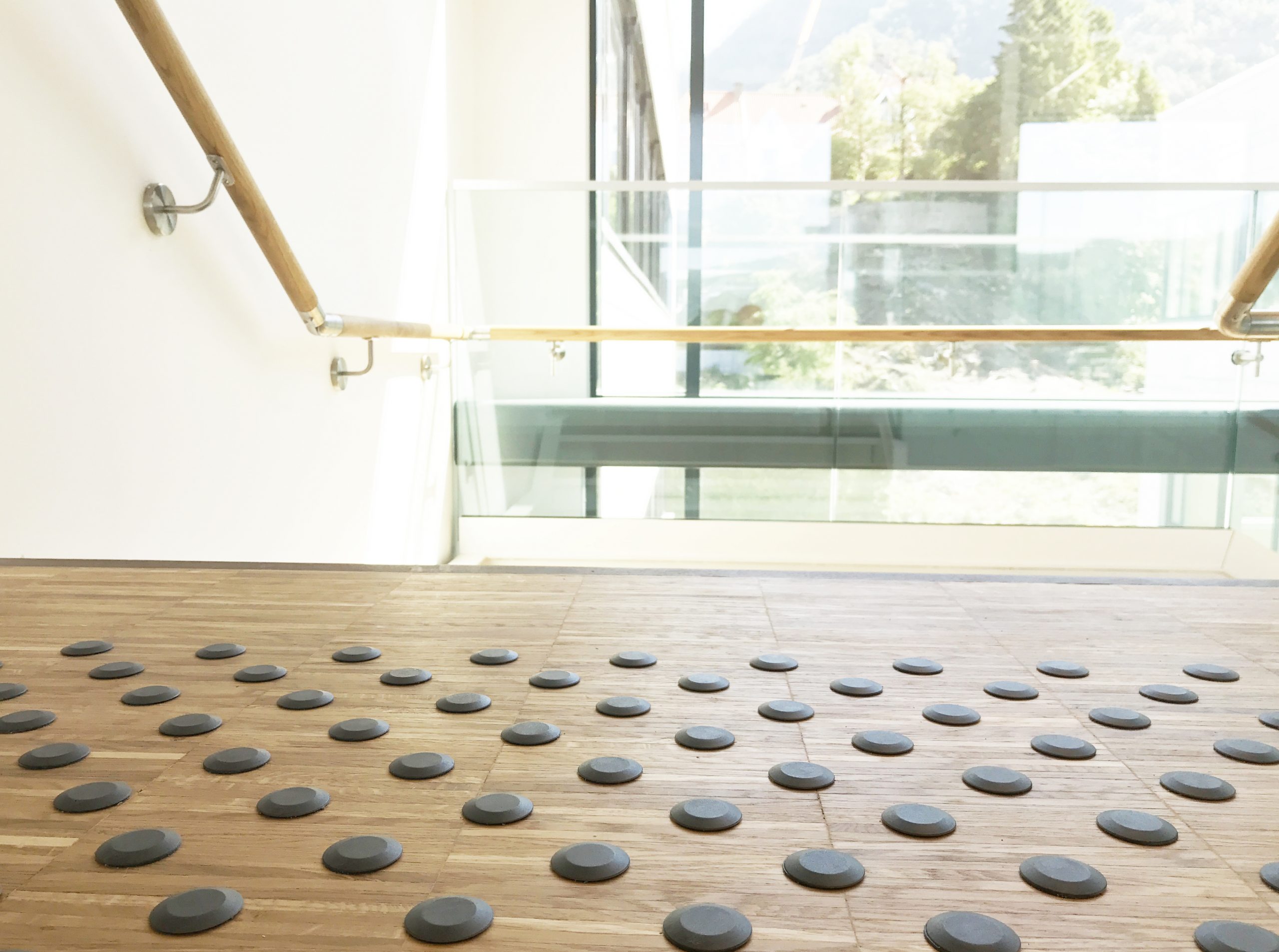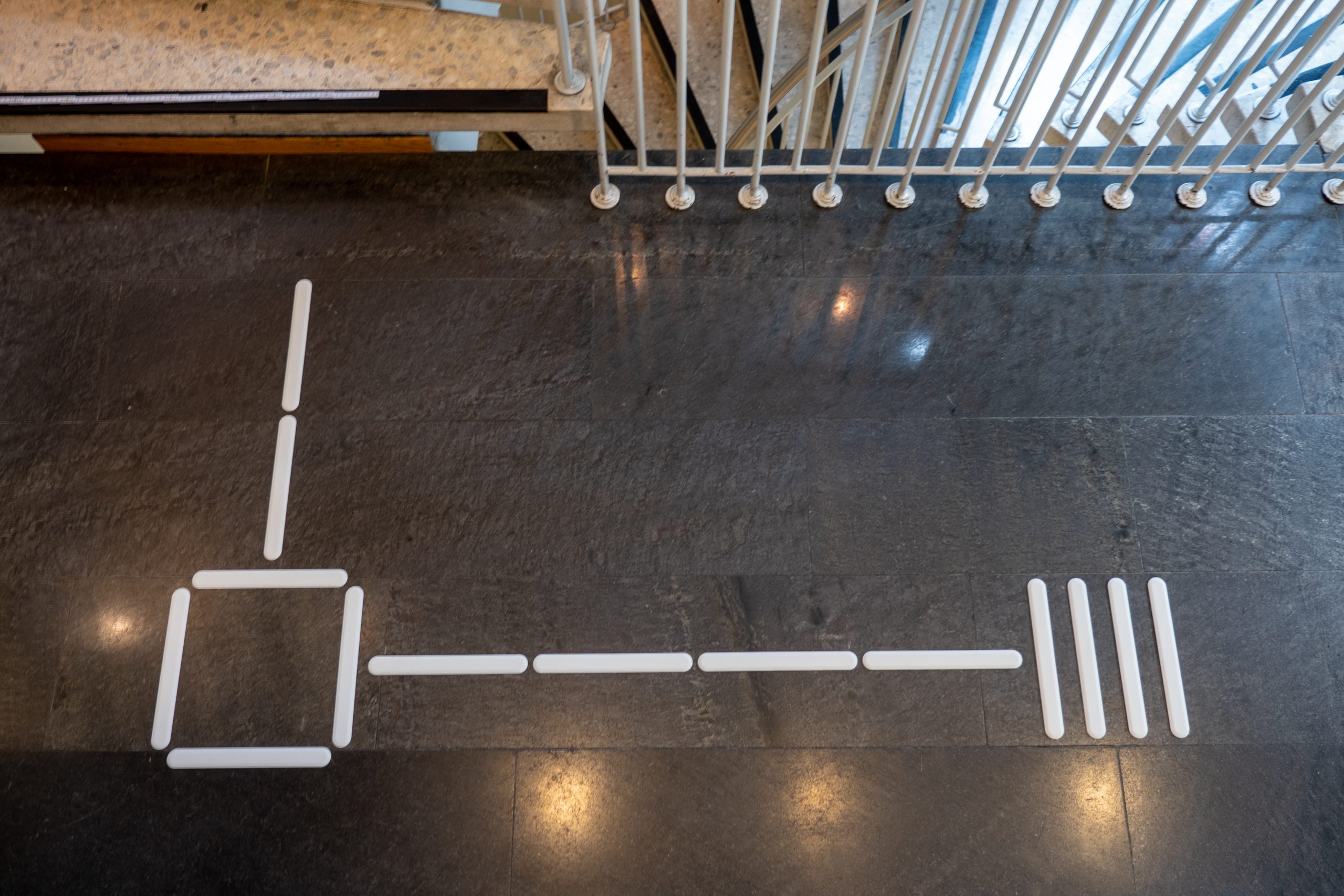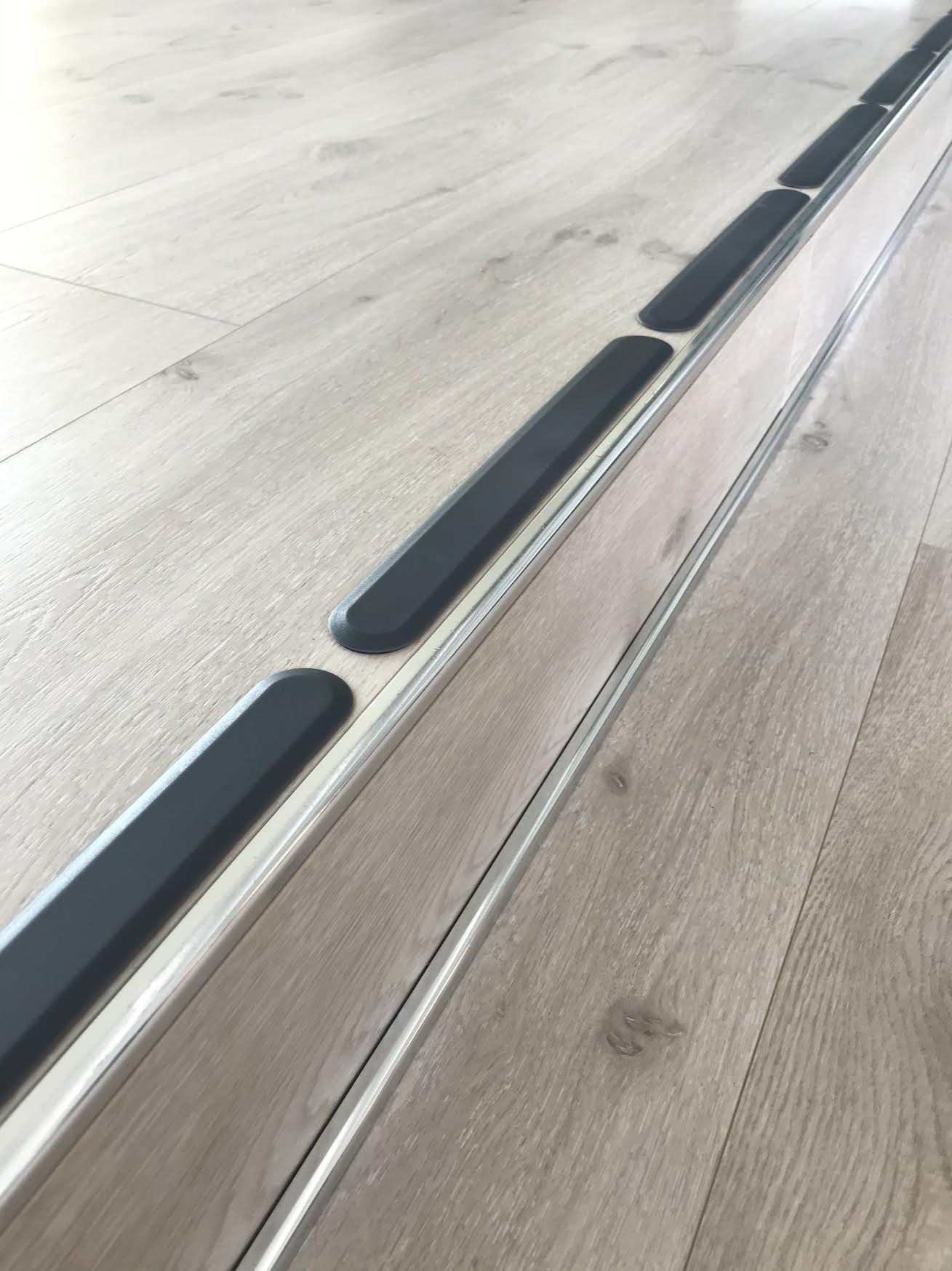Regulations
UK current guidelines and regulations regarding Universal Indoor Tactile Marking Design
The rules for marking buildings are set out in Standard BS 7997:2003 Products for tactile paving surface indicators and ISO/FDIS 23599, Assistive products for blind and vision-impaired persons—Tactile walking surface indicators.
The goal of tactile navigation is to allow users of a building to be able to find the most important places without other special measures.
Use Smart Tactiles experience to assess the use of any given building. Use Smart Tactiles experience to design the optimal solution for your project.
Floor – Stairs – Ramps
Attention field
Attention fields are mounted with transverse indicators / ribs on the floor in front of the bottom of the stairwell or a change in height. The field must have a depth of 60 cm and a width equal to the width of the stairs. The field is mounted from the step on the lower step. The color of the indicators should have a contrast of 0.8 against surrounding surfaces wherever possible.


Danger Field
Danger fields are mounted with round, tactile knobs on the floor above the upper tap stage. It must be retracted one step away from the upper step, have a depth of 60 cm and a width equal to the width of the stairs. The pattern should be laid diagonally. The field should warn of dangers, such as level differences and stairs.
Ramps
Ramps shall have attention fields mounted on both the width of the ramp and with a depth of 60 cm. The top of the ramp shall be marked with a 40 mm wide contrast stripe in the width of the ramp, with a luminance contrast of 0.4 between marking and ramp.


Guidelines
Tactile guide lines, turning fields and stop fields are mounted on the floor and consist of indicators / ribs that guide users through open areas and corridors. The lines can easily be followed with the long canes and function as pathways leading to important areas in the building, for example, a reception, information sign, lift, stairs, WC and / or meeting rooms etc.
Change of direction or stop field in the guide line must be marked with ribs that are in a square or across fields that measure a minimum of 30cm * 30cm. The components must be non-slip equivalent to R10-R12 and with a contrast of 0.4 or higher against surrounding surfaces.
Stairs and Stair Noses
There must be a danger area on the floor before the top step with a depth of 600 mm. in the entire width of the stairs and which is to be drawn one step deep from the stairs.
Before the bottom step, lay an attention field with a depth of 600 mm. in the entire width of the stairs.
Each step shall have a contrast stripe that extends over the entire width of the stair nosing at the entrance with a stripe width of between 30 – 40 mm.
Luminance contrast for the low-seated tactile marking in the stairs shall be 0.8 in relation to the floor.
In certain buildings steps must also be marked with a low-seated luminescent guidance system for escape routes. Smart Tactiles have ideal solutions for matching tactile and illuminating markings.
The elements above should have a luminance contrast of 0.8 in relation to the colours of the floor and stairs.

High-seated – Handrail sign
Handrail sign
Handrail signs are mounted on the top of the handrail on each floor approx. 15 – 35 cm into the handrail so that numbers and letters hit between the thumb and forefinger in a normal grip. The signs must have tactile writing and braille.
The signs are attached to the right handrail seen from below and the right handrail seen from above. A sign is mounted on the lower and upper floors. In the floors between, two signs are used, one for those going up and one for those going down.

Universal Design
Requirements for universal design
Planning
- Layouts of all pedestrian areas should be simple, logical and consistent.
This will enable people to memorise environments that they use regularly
and predict and interpret environments that they are encountering for the
first time. - Contrasts in colour and tone should be used to accentuate the presence
of certain key features. This will enable many people to use their residual
vision to obtain information. - Orientation and wayfinding information should be provided by the use
of high visibility and, where appropriate, tactile signing. Many visually
impaired people can read signs if they are properly positioned, and if the
design incorporates contrasting colours and tones, adequately sized and
styled text, and a matt finish.
Universal design of sports and local facilities
Luminance contrast to stairs, guide lines and attention fields must have a minimum luminance contrast to the floor / deck of 0.4. Danger field / warning field must have a minimum luminance contrast of 0.8.
C = luminance contrast = (E object – E background)
E background
C = Luminance Contrast
E object = Reflected brightness from the object seen against the background.
E background = Reflected brightness from the background the object is viewed against.